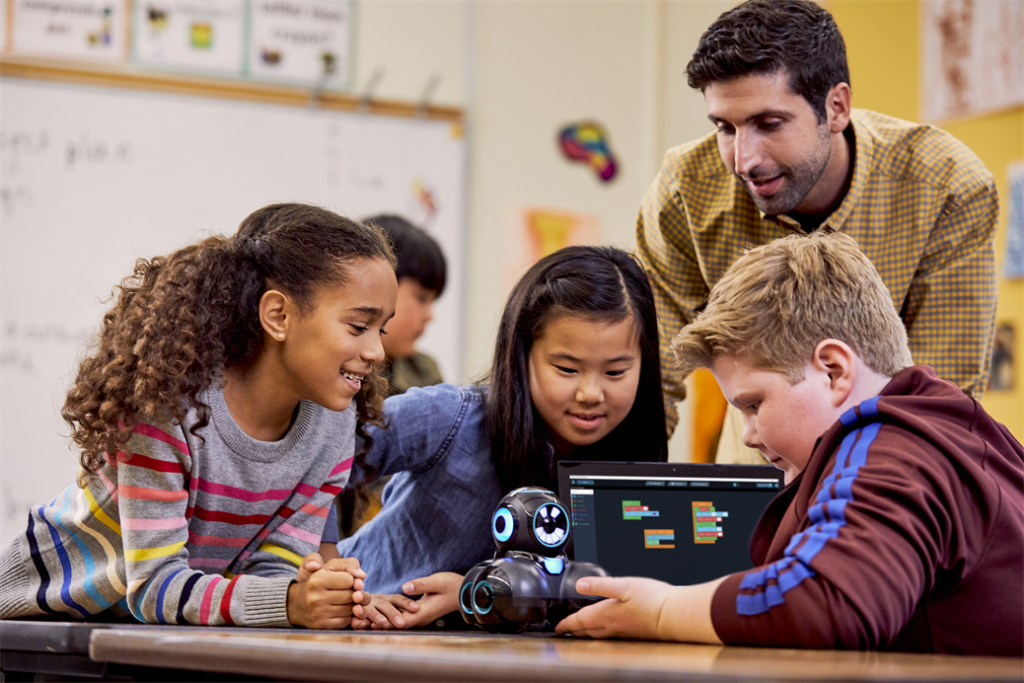So, you’re going to be teaching STEM? That’s great! You may be a first-time STEM teacher, or perhaps you’re an experienced STEM teacher eager to add new energy and pizzazz to your lessons. In either case it’s time to roll up your sleeves and dive in to learning, planning, and preparing. I’m guessing that one question you have is: How can I plan and organize to make my STEM classes successful?
The questions listed here might help you think through some STEM issues.

By Anne Jolly
1. Who will I be teaching?
You may be teaching STEM lessons during your regular science and math classes; or, you may be teaching a stand-alone STEM class during or after-school. Ideally, all students at your school will be involved STEM classes, included those currently underrepresented in STEM fields, such as girls, minorities, and disadvantaged students. If you are the only STEM teacher or teaching a stand-alone STEM class, then plan to recruit a variety of students for STEM that includes underrepresented groups. The more students you can expose to STEM the greater the impact. And all students need opportunities to be creative, innovative, critical thinkers and problem-solvers.

2. Which of my course objectives lend themselves to solving a STEM problem?
Take a look at both the science and math standards that the students you teach are expected to meet this year. Some of these lend themselves better to STEM lessons than others, and some are more important for kids to master than others. You can use this information in a couple of possible ways in your initial planning:
• Option 1: Start with your content standards. You might begin by choosing one or more content standards kids need to focus on and then look for an engineering challenge (real life problem) that would oblige kids to apply these standards. Note: You don’t have to focus on each content area equally in a given STEM lesson. One lesson may be heavily geared toward science applications; another may be geared more toward math applications. Do plan to intentionally include both content areas, however.
• Option 2: Start with the engineering challenge. Maybe you already have a real-world problem in mind; or you may plan to involve your students in identifying a real problem they want to solve. (In that case, you will have them “hooked” to begin with.) Whatever the choice – this engineering challenge needs to be doable and should always address one or more grade-level science and math objectives.
3. What kinds of problems can my students realistically address?
Problem-solving is fundamental to STEM but coming up with real world engineering challenges for kids to solve can be tricky. Check out a previous Defined STEM post that explains how to approach this.
Get comfortable with both the math and the science content your students will use in each challenge. If you teach only science, or only math, collaborate with a teacher in the other field. In the language of math and science, terms sometimes mean different things. For example, in science the term “factor” might refer to something that contributes to a result, such as a catalyst in a chemical reaction. In mathematics, a factor is a number (or algebraic expression) that is multiplied together with another number to produce a given product. You want to be aware of possible inconsistencies in terminology and be sure you are using the correct “teacher talk” when discussing science and math content with students.
STEM problems require a hands-on approach. To address these problems, kids should have access digital tools, measuring devices, and other equipment. Often your supply list will include items such as wood, wire, cardboard, tape, string, tongue depressors, paper and plastic cups, plastic spoons, foam board, and so on. Call on parents and line up business partners to help donate these types of supplies.

4. How will my students know that they have been successful?
Start thinking ahead of time about criteria for success on STEM lessons. Your students will design and construct prototypes or systems to solve the problem. Then they will test these to determine how well their solutions work. When deciding how to rate “success,” remember that failure is an accepted part of the STEM process. Success should not be judged on the results of their prototype testing, but rather on how they thoughtfully approached the problem; created their prototype; and then analyzed and redesigned their solution.
5. How will I prepare my students for STEM lessons?
Be sure you don’t “spring” STEM on your students as a surprise. They’ll be more likely to respond productively if they know in advance what to expect. This early communication will help your students understand the what and why of STEM and what these lessons will require of them.
Give them STEM information in advance in another format. You might share it in a video or digital form before beginning the STEM lesson.

6. How will I teach my kids to work productively in teams?
Students will work together in teams during each STEM lesson. That may set off warning bells – especially if you’ve already had discouraging experiences involving kids in successful teaming. To be productive, they need to understand the value and purpose of working together and to develop a sense of belonging to a team. They need to build skills that will help them collaborate successfully and be responsible and accountable to one another for their teamwork.
7. What will my STEM instructional practices look like?
You’re at the right website to answer that question! If you’ve had success with problem-based learning, (PBL) then you’re all set. STEM features a PBL approach, with a focus on using an engineering design process to promote rigorous learning in science and math.
While leading STEM lessons, allow kids to question, experience, imagine, innovate, and design. Set up a learning environment that allows them to discover ways to solve problems on their own while you provide needed guidance to keep them on track.
Above all, help your students believe that they will can experience success in the lesson and show them that they have the support they need to be successful. Provide opportunities for them to have positive and encouraging team experiences. Give them time to complete the activity. Remove the fear of failure.(Students often learn more from what doesn’t work than from what does work.)
8. How am I integrating technology?
The National Research Council says all students should learn these core ideas concerning technology. Students should. . .
1) Be aware of the web of complex technological systems that society depends on.
2) Learn how to use new digital technologies as they become available.
3) Recognize the role that technology plays in advancing science and engineering.
4) Make informed decisions about technology and its impact on people and the environment.
Be intentional about covering these aspects of technology as you progress through a series of STEM lessons. Above all, reach out for assistance. If you teach science or math, connect with the technology teacher to help kids to use new technologies appropriate for your STEM lesson.

As you prepare to teach STEM, realize that many of your students will not be employed in fields typically identified as STEM disciplines. However, because of the STEM exposure you give them, they will be able to appreciate and use this problem-solving approach and way of thinking no matter what field they choose.
I’m so glad you’re a STEM teacher!
Want to discover more STEM tools for your classroom?
Check our products page and start your lessons with RobotLAB! and our learning Platform EngageK12!
RobotLAB products Take me to Engage! K12
